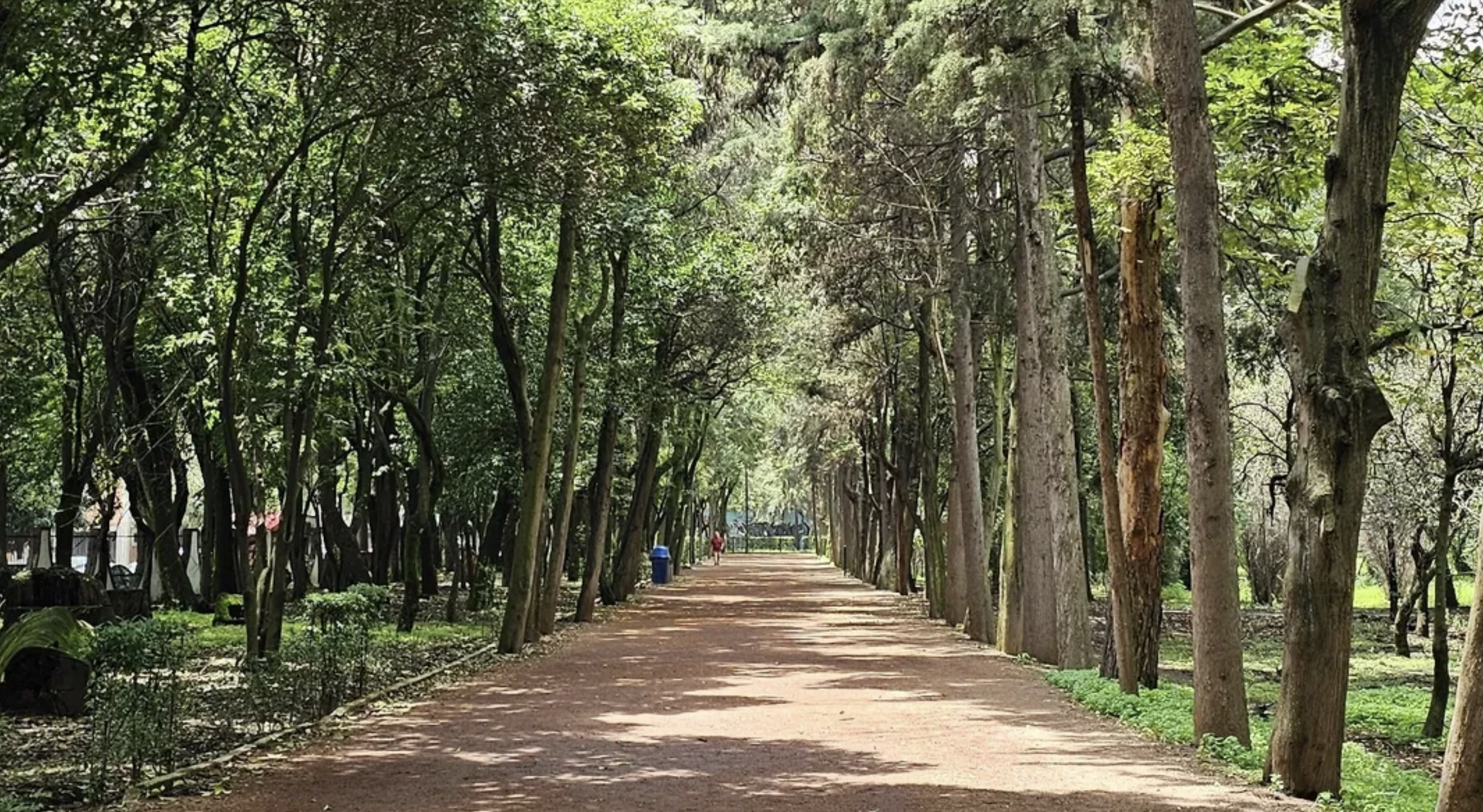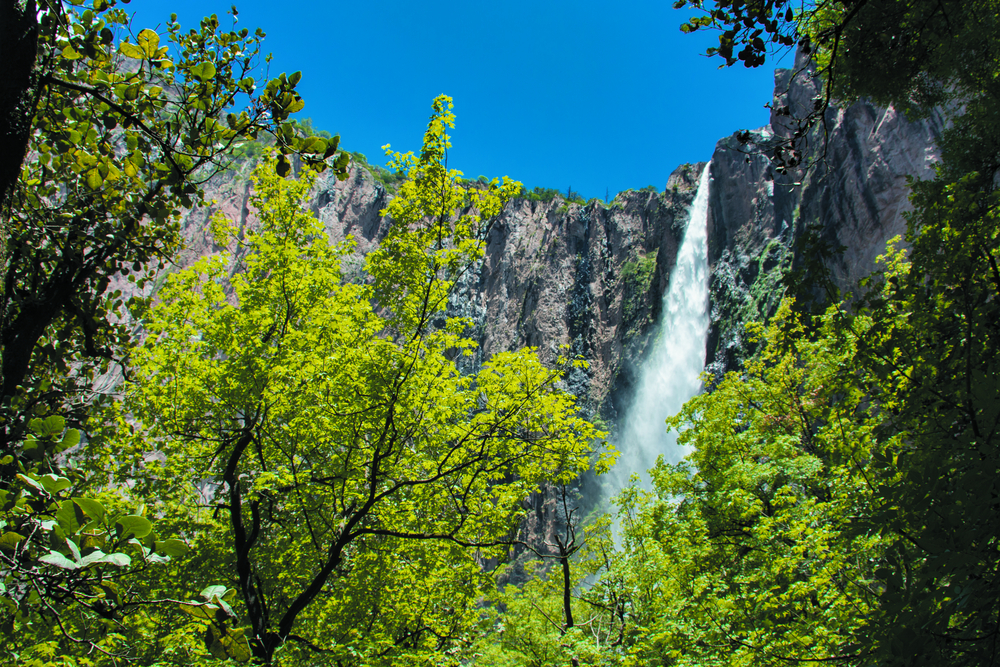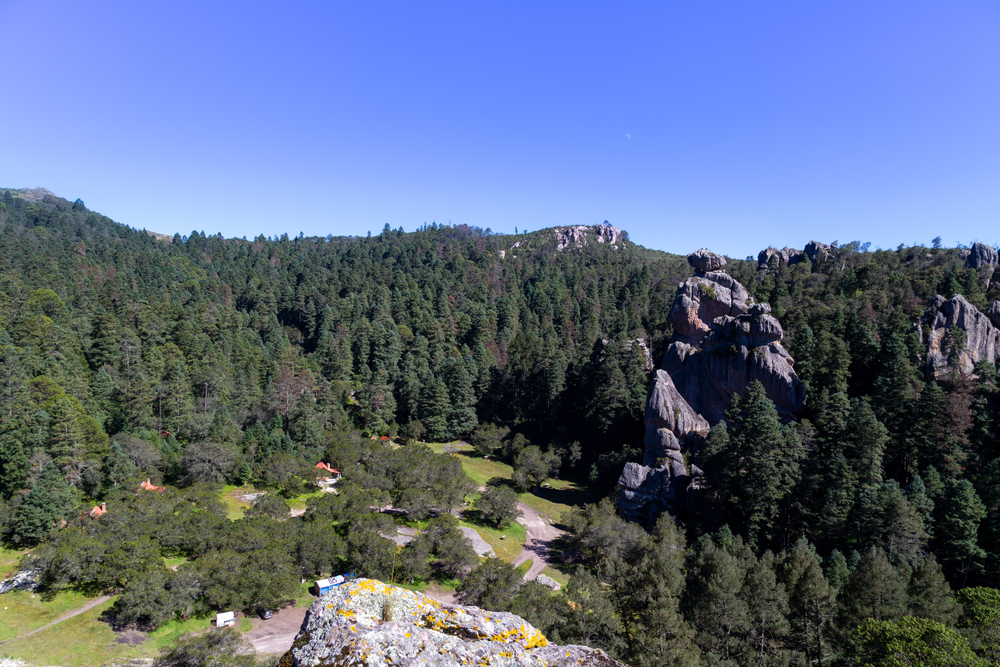El Historico Coyoacan Overview
El Histórico Coyoacán National Park, locally known as “Viveros de Coyoacán,” is located in the Coyoacán district, at the heart of Mexico City.
Covering approximately 39 hectares (0.15 square miles), this urban park was originally established in 1938 as a tree nursery to supply vegetation for reforestation efforts across the city and surrounding areas. Over time, it has evolved into a vital recreational and educational space, offering a green refuge amid the bustling metropolis.
The park’s terrain is predominantly flat, making it highly accessible for visitors. Well-defined pathways wind through dense vegetation, primarily composed of eucalyptus, pine, and cedar trees. These trees not only enhance the park’s scenic beauty but also contribute significantly to air quality, serving as one of Mexico City’s essential green lungs. In addition to the forested sections, the park features landscaped gardens and designated areas for plant propagation, reflecting its original function as a nursery.
Although situated in an urban environment, the park hosts a variety of wildlife that has adapted to city life. Squirrels are commonly seen darting among the trees, while an array of bird species, including sparrows, hummingbirds, and pigeons, find shelter in the park. The presence of these animals provides visitors with a unique opportunity to experience a touch of nature without leaving the city.
One of the park’s most popular features is its network of walking and running trails, which stretch for approximately two kilometers. These paths are frequently used by joggers, walkers, and individuals practicing yoga or tai chi.
The serene atmosphere and fresh air offer a peaceful escape from urban life, allowing visitors to relax and rejuvenate. Additionally, picnic areas provide a space for families and friends to gather and enjoy outdoor meals. For those interested in botany, the park’s nursery runs educational programs on the importance of reforestation and environmental conservation.
Visitors can engage with the park in various ways. Beyond recreational activities, it offers workshops and events focused on gardening and sustainability, designed to educate the public on eco-friendly practices and the significance of preserving green spaces in urban areas. Guided tours are also available, providing in-depth information on the park’s diverse plant species, its history, and its evolution over the decades.
From a conservation perspective, El Histórico Coyoacán National Park faces challenges typical of a natural space within a densely populated city. Urban expansion and a constant influx of visitors necessitate ongoing efforts to maintain and protect its ecosystems.
However, thanks to dedicated management and community collaboration, the park has successfully preserved its biodiversity and continues to serve as both a natural sanctuary and an educational center. Reforestation initiatives and regular upkeep ensure that it remains a thriving green space for future generations.
El Histórico Coyoacán National Park stands as a living example of the balance between nature and urban development. It provides residents and tourists alike with a place for recreation, education, and environmental connection, all within a historically and culturally rich setting.















































































